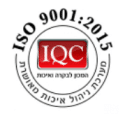ICG imaging
indocyanine green (ICG) imaging is a longstanding imaging method (used for almost sixty years now ) with many recently developed applications. Indocyanine green dye was developed for near-infrared (NIR) photography by the Kodak Research Laboratories in 1955 and was approved for clinical use already in 1956. However, it took over ten years before ICG was used for angiography. For retinal angiography it has been used from early 70s. So this means that while the material and method is accepted and validated in principle, specific applications still have much potential for further research and optimization, particularly in the field of imaging and video processing.
To date, fluorescein, which is active in visual wavelengths has seen wider use than ICG in retinal angiography. However, although ICG cannot be seen without the aid of electronic cameras, it provides information about deeper lying blood veins. This is thanks to the fact that it operates in near infrared (NIR), where tissues offer less light interference.
In ICGA (ICG angiography) excitation of the tissue (at 750 to 800 nm wavelength illumination) is performed, and observation at a longer emission wavelengths (over 800 nm;) then follows. All that is required to prepare an ICGA device are a few filters (to prevent mixing of the excitation and fluorescing rays), camera and light source. An excellent signal to noise ratio (SNR) can be attained with even a weak emitter.
Of course, better images, and broader applications are available for those prepared to make the investment in this new-old technique. To learn more of your options contact Merkel today. You will find not just affordable prices and high quality devices but also technical expertise and extensive post-purchase support which will help you save time in getting the system up and running optimally in your lab.


